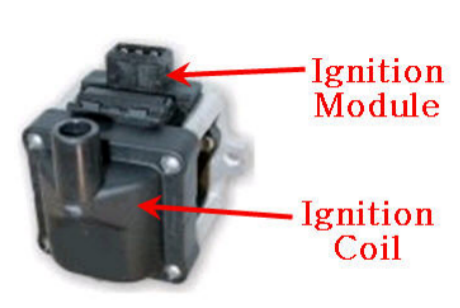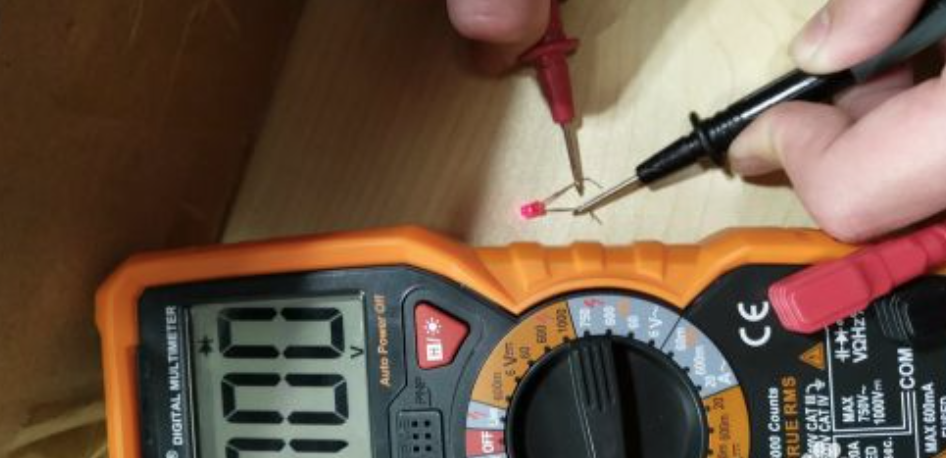
Ignition coil plays a vital role in the ignition system. Well, how does ignition coil work? What is an ignition module? How to know the performance of ignition coil? How to detect ignition coil and ignition module? In this article, these questions we concern will be answered.
How does ignition coil work
The primary winding is on the outside of the secondary winding, so magnetic flux produced by the secondary winding is exactly the same as that produced by the primary winding. The core of ignition coil with closed magnetic circuit is closed, and the magnetic flux passes through the core. The magnetic conductivity of the core is about 10,000 times that of the air. Therefore, if the ignition coil with open magnetic circuit wants to obtain the same magnetic flux as the ignition coil with closed magnetic circuit, the primary winding must have a large magneto motive force (ampere turns). Therefore, the primary winding with more turns and larger diameter must be used. The number of turns of the primary winding is more, and the number of turns of the secondary winding needs to be increased. Therefore, the ignition coil with closed magnetic circuit can be miniaturized. At present, the ignition coil with closed circuit is quite small, can be combined with the igniter, and even can be connected with spark plug.

Ignition module
The ignition module likes as an electronic switch. It controls the current in the primary winding of ignition coil. The function of conversion induces the high voltage which spark plug is ignited by the rotor and secondary wires directly. The ignition module controls the ignition coil for ignition in the cylinders by receiving the signal when the vehicle starts. If there is a problem with the ignition module, the engine may shut off and the vehicle cannot be started.
Key performance indicators of ignition coil
(1) Ignition performance of the ignition coil in thermal state
Thermal state of the ignition coil performance includes the following two contents: When the temperature of the surrounding medium of the ignition coil is +70℃ or the specified working speed, the specified continuous and uninterrupted spark gap can be maintained on the standard three-needle discharge. When the ignition coil is placed in an inactive thermostat at +120℃ for 1h, the test conducted for 30s according to the above method, and the ignition coil is able to work reliably, and no insulation shall overflow after the test.
(2) Ignition performance of the ignition coil in cold state test
In cold state testing, the electrode gap of the discharge device should be increased by 2mm over the usual value. The primary winding, secondary winding of ignition coil (12V) and additional resistance: resistance value (20℃) should meet the relevant requirements, or the ignition coil is placed in a low-temperature chamber at -40℃ for 3h in non-working condition and then taken out. The ignition performance test is conducted at room temperature within 5 min. When the rotating speed is 2500 r/min, the continuous and uninterrupted spark gap is not less than 9mm.
(3) Ignition performance of ignition coil at room temperature
Ignition coil at room temperature, low-voltage coil resistance value of ignition coil of is 1.95 Ω, high voltage ignition coil resistance value is 3600 Ω, additional resistance is 1.1 ~ 1.2 Ω. The high voltage generated by the secondary winding of the ignition coil shall be connected to the standard three-needle discharger by the distributor. The ignition coil shall generate continuous spark on the standard three-needle discharger at different rotating speeds. The clearance shall be no less than the specified value.
Detection methods
The crankshaft position sensor (CKP) and camshaft position sensor (CMP) are tested normally, but there is no high voltage spark, and usually power leads of the ignition coil assembly are open circuit.
(1) Test with high-impedance multimeter and light-emitting diode: For vehicles without distributor, first unplug the primary winding plug of 4-channel ignition coil and test 3 ~ 4 connector pin with high-impedance multimeter with voltage no less than 11 V. Then connect the light-emitting diode with connector pin 1, 4 and 3, 4 respectively. If the light-emitting diode does not shine when the engine is started, it means there is no low-voltage signal. Check the low-voltage circuit. The fault of the power transistor will affect the ignition control signal. The power transistor is the ignition control signal amplifier. Disconnect the ignition switch and connect the light-emitting diode between the battery positive pole and the power transistor terminal to start the engine and make it run for 10s, If the light-emitting diode does not shine, replace the power transistor.

(2) Resistance value test: The resistance value of the ignition coil is directly related to the ignition performance. If there is no spark or weak spark, the resistance value of the primary winding and the secondary winding should be checked, and the high-voltage lead of each cylinder should be pulled out respectively. The resistance value between 1 and 4 cylinders and between 3 and 4 cylinders should be measured at 20℃. If the resistance value is normal within the scope specified by the manufacturer, if the resistance value is too low, it indicates an internal short circuit; If the resistance is too high, the internal circuit is open circuit. If the measured value does not conform to the manufacturer's regulations, it must be replaced.
(3) When ignition coil is about to be damaged, the main characteristic is that the ignition coil is hot.
(4) The fault of ignition coil of a classical car is mainly judged from the jump spark of high voltage. Under the premise of the normal low-voltage circuit, if the ignition coil has no fault, it should be a strong blue spark at jump spark.
(5) If the spark plug of a cylinder is not working well or does not fire, the high tension lead from the cylinder can be pulled out, and replace a new spark plug. The spark of spark plug can jump 8mm between the cylinder block and outside the cylinder. If it is normal, the fault is in the original spark plug.
If there is no spark or weak spark during driving, use infrared thermometer or touch the ignition coil with your hand to determine whether the ignition coil or ignition module has internal short circuit or open circuit fault. When fault is sure, whether it can be started or not, it can be judged by measuring the temperature of the ignition coil housing.
(1) Ignition coil overheating: the surface temperature of the ignition coil is more than 95℃, indicating that the ignition coil internal short circuit, must be replaced.
(2) Ignition coil undercooling: The surface temperature of the ignition coil is equal to the ambient temperature when starting, indicating that the internal circuit of the ignition coil is open circuit and should be replaced.
(3) Ignition module overheating: Ignition module temperature is higher than 100℃, indicating that the ignition module internal short circuit, must be replaced.
(4) Ignition module undercooling: The ignition module and the environment temperature are equal when starting, indicating that the ignition module internal circuit is open circuit, means it should be replaced.
Note: It is strictly prohibited to wash the engine with cold water in hot engine condition. Drastic temperature changes may cause the ignition amplifier to be damaged (cracked).
 James Smith
James Smith  July 23, 2020
July 23, 2020